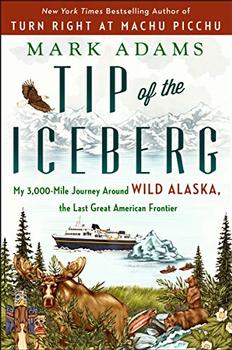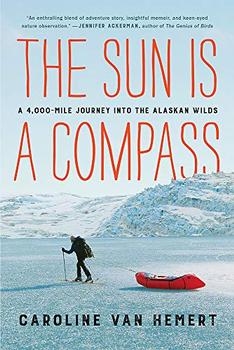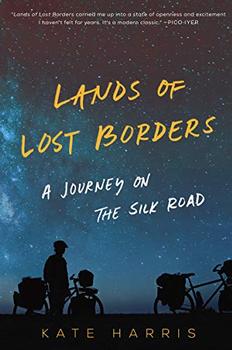Summary | Excerpt | Reviews | Beyond the book | Read-Alikes | Genres & Themes | Author Bio

My 3,000-Mile Journey Around Wild Alaska, the Last Great American Frontier
by Mark AdamsIn the late 19th century, railroad magnate Edward Harriman decided he needed a break from his business concerns, which were having a detrimental effect on his health. He concluded a vacation was in order, and, being an avid hunter, he planned to take his family to Alaska so he could hunt bear.
Also being immensely wealthy, the man decided that rather than simply travel for pleasure he would fund a full-blown expedition to the far north as part of his travels, one which would include dozens of the most knowledgeable naturalists of his day. The SS George W. Elder was commissioned, re-fitted to Harriman's specs, and subsequently left Seattle for Alaska on May 31, 1899 with a team of luminaries aboard, its two-month voyage intended to document the state's geography and environment. Almost 120 years later, travel writer Mark Adams set off on his own journey to Alaska, intent on following the Harriman party's footsteps. Tip of the Iceberg compares the Harriman expedition's experiences to his own.
The first few chapters focus primarily on the 1899 trip, describing Harriman and the others who were aboard. It's astonishing to think that a private individual would be willing to underwrite such a major undertaking, recruiting a veritable who's-who of America's most famous naturalists to participate. These included John Muir, creator of the Sierra Club and an expert on glaciers and George Bird Grinnell, who as editor of the influential Forest and Stream magazine and founder of the Audubon Society was "arguably the most respected outdoorsman in the country." Also on board were C. Hart Merriam, the co-founder of the National Geographic Society; Henry Gannett, whose "brilliant innovations in geography led him to be known as 'the Father of American Map Making,'" and a whole host of other well-known scientists, artists, photographers and writers. This multi-disciplinary team mapped unknown fjords and glaciers, discovered new plant and animal species, and documented what remained of the native cultures in the area. They were also one of the first groups of people to identify the need for conservation of Alaskan resources, such as its salmon and seal populations.
Gradually, Adams turns the focus away from this historical venture to his own trip, a part of the narrative that I found much more entertaining. He has a gift for describing scenes so vividly they made me want to visit the areas he explored:
Our two-person kayak skimmed the surface of Glacier Bay's glassy water, the bow pointed like a compass needle at the rocky lump of Russell Island. The sun was out, always a pleasant surprise in Southeast Alaska, and a light mist lingered around the island's upper half. We'd been paddling for about an hour, but I had no idea how far we'd come or how far we had left to go. My sense of scale hadn't yet acclimated to the vastness we'd entered—water, sky, and mountains were all I had to work with. Aside from the splash of our paddles and the occasional tap-tapping of sea otters cracking open mussels, all was quiet.
Adams also introduces the quirky individuals he meets in his travels, such as Nome mayor Richard Beneville, "a chatty, gay, ex-alcoholic liberal" whose previous career included performing in off-Broadway musicals; as well as "Robert," who doesn't want his name used because he "transacted much of his business in gold and considered the Internal Revenue Service illegitimate." The author is also adept at conveying the dangers he ran into, primarily due to bears and bad weather. Most notably, Adams narrates all his experiences with a sense of humor.
Although several sections are devoted to a discussion of climate change and Adams does subscribe to the belief that increasing world temperatures are human-caused, the book isn't a manifesto. Indeed, the author points out that the glaciers had already begun receding in John Muir's day (the scientist was unable to use maps from 1794 because the landscape was so different, the glaciers having withdrawn over 40 miles in the interval). Adams also mentions that while climate change will have dire impacts in many cases, some regions may see benefits, counterbalanced by negatives.
Tip of the Iceberg is one of the better travelogues I've read in recent years. It vibrantly conveys Alaska's sights and describes Adams' own encounters there with insight and humor. I highly recommend the book, especially for armchair travelers and those interested in the history and nature of this unique land.
![]() This review was originally published in The BookBrowse Review in July 2018, and has been updated for the
July 2019 edition.
Click here to go to this issue.
This review was originally published in The BookBrowse Review in July 2018, and has been updated for the
July 2019 edition.
Click here to go to this issue.

If you liked Tip of the Iceberg, try these:

by Caroline Van Hemert
Published 2020
The gripping story of a biologist's journey from Washington State to high above the Arctic Circle - traveling across remote and rugged terrain solely by human power - to rediscover birds, the natural world, and her own love of science.

by Kate Harris
Published 2019
A brilliant, fierce writer makes her debut with this enthralling travelogue and memoir of her journey by bicycle along the Silk Road—an illuminating and thought-provoking fusion of The Places in Between, Lab Girl, and Wild that dares us to challenge the limits we place on ourselves and the natural world.
Your guide toexceptional books
BookBrowse seeks out and recommends the best in contemporary fiction and nonfiction—books that not only engage and entertain but also deepen our understanding of ourselves and the world around us.